In my recent video, I purchased some of the best smart light strips on Amazon and compared their brightness, colors, and specs. You can see how it all went down in the video linked here.
There was way too much information to squeeze into the video without making it an hour long.
So in this article I’ll show you my notes from comparing these, and also go over more detail about how they each worked.
Table of Contents
Light Strips Comparison Tables
Affiliate Disclosure: This page has affiliate links, which earn us commission at no cost to you.
In the video I covered the light strips from least to most expensive. I’ll list them in the same order here so you can look at their specs.
| Price | Length | Lumens | Extendable | Special Effects | Smart Home Compatibility | ||||
|---|---|---|---|---|---|---|---|---|---|
| Sylvania Zigbee | $ | 6 ft / 1.82 m | ~800 lumen | up to 20 ft / 6.1 m | None | Alexa, Google, SmartThings | |||
| Nexlux | $ | 16.4 ft / 5 m | ~500 lumen | up to 33 ft / 10 m | Basic color changing fades | Alexa, Google | |||
| Govee Dream color Bluetooth | $ | 16.4 ft / 5 m | ~1100 lumen | No | Change color sections, music effects, others | None | |||
| Govee Dream color WiFi | $ | 16.4 ft / 5 m | ~1000 lumen | No | Change color sections, music effects, others | Alexa, Google | |||
| Govee RGBWW | $ | 6.6 ft / 2 m | ~900 lumen | No | Basic Govee functions | Alexa, Google | |||
| Sengled | $$ | 6.6 ft / 2 m | 1400 lumen | up to 33 ft / 10 m | None | Alexa, Google, SmartThings | |||
| Yeelight | $$ | 6.6 ft / 2 m | ~600 lumen | up to 33 ft / 10 m | Color flow and some basic scenes | Alexa, Google, SmartThings, HomeKit | |||
| TP-Link | $$ | 6.6 ft / 2 m | 1400 lumen | up to 33 ft / 10 m | Addressable color sections, scenes | Alexa, Google, SmartThings | |||
| Philips Hue | $$$ | 6.6 ft / 2 m | 1600 lumen | up to 33 ft / 10 m | Hue sync & other apps | Alexa, Google, SmartThings, HomeKit | |||
| LIFX Z | $$$ | 6.6 ft / 2 m | 1400 lumen (700 lumen per meter with 2800 max) | up to 33 ft / 10 m | Addressable color sections, paint colors, scenes | Alexa, Google, SmartThings, HomeKit |
Light Strip Brightness
In my testing, I wanted to find a way to measure the maximum brightness of each light strip.
I gathered data on the Luma waveform of each light strip. Luma is used in video editing to represent the level of brightness.
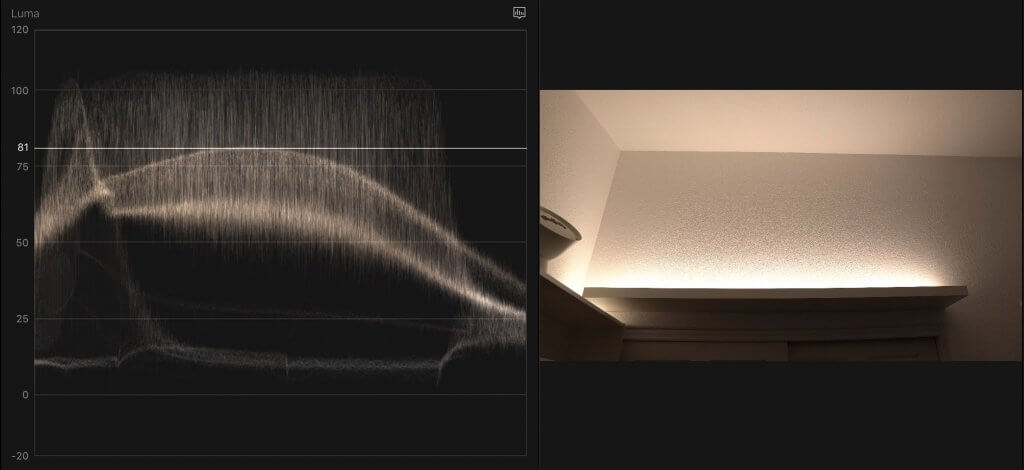
Since it’s difficult to see the specific numbers in the video, here are my notes. This first table shows the max brightness for each light strip as measured in the Luma waveform.
| Maximum brightness | Minimum brightness | Warm White Max | Cool White Max | Red Max | Green Max | Blue Max | |
|---|---|---|---|---|---|---|---|
| Sylvania Zigbee | 50 | 6 | 48 | 39 | 10 | 28 | 17 |
| Nexlux | 29 | 3 | 25 | 30 | 7 | 21 | 16 |
| Govee Dream color Bluetooth | 64 | 7 | 48 | 61 | 19 | 57 | 35 |
| Govee Dream color WiFi | 58 | 5 | 45 | 57 | 18 | 51 | 33 |
| Govee RGBWW | 53 | 23 | 35 | 48 | 13 | 29 | 18 |
| Sengled | 76 | 3 | 35 | 50 | 12 | 27 | 11 |
| Yeelight | 33 | 3 | 30 | 32 | 12 | 36 | 26 |
| TP-Link | 79 | 3 | 53 | 70 | 23 | 42 | 32 |
| Philips Hue | 87 | 1 | 37 | 74 | 15 | 27 | 22 |
| LIFX Z | 81 | 2 | 60 | 72 | 24 | 37 | 31 |
Brightness measured in lumens
For this next table, I converted the Luma numbers above to lumens. This is helpful if you’re wanting to see the maximum output that I measured for each light strip in lumens.
| Maximum brightness | Minimum brightness | Warm White Max | Cool White Max | Red Max | Green Max | Blue Max | |
|---|---|---|---|---|---|---|---|
| Sylvania Zigbee | 875 | 105 | 840 | 683 | 175 | 490 | 298 |
| Nexlux | 508 | 53 | 438 | 525 | 123 | 368 | 280 |
| Govee Dream color bluetooth | 1120 | 123 | 840 | 1068 | 333 | 998 | 613 |
| Govee Dream color WiFi | 1015 | 88 | 788 | 998 | 315 | 893 | 578 |
| Govee RGBWW | 928 | 403 | 613 | 840 | 228 | 508 | 315 |
| Sengled | 1330 | 53 | 613 | 875 | 210 | 473 | 193 |
| Yeelight | 578 | 53 | 525 | 560 | 210 | 630 | 455 |
| TP-Link | 1383 | 53 | 928 | 1225 | 403 | 735 | 560 |
| Hue | 1523 | 18 | 648 | 1295 | 263 | 473 | 385 |
| LIFX Z | 1418 | 35 | 1050 | 1260 | 420 | 648 | 543 |
Light Strips: Pros and Cons
Now let’s take a look at each light strip individually to find the best option for your home. I’ll also note which light strips are winners in this comparison.
Sylvania: Best Budget Zigbee 🏆
Sylvania light strips are a good option for inexpensive Zigbee lights that will work great with something like a SmartThings hub.
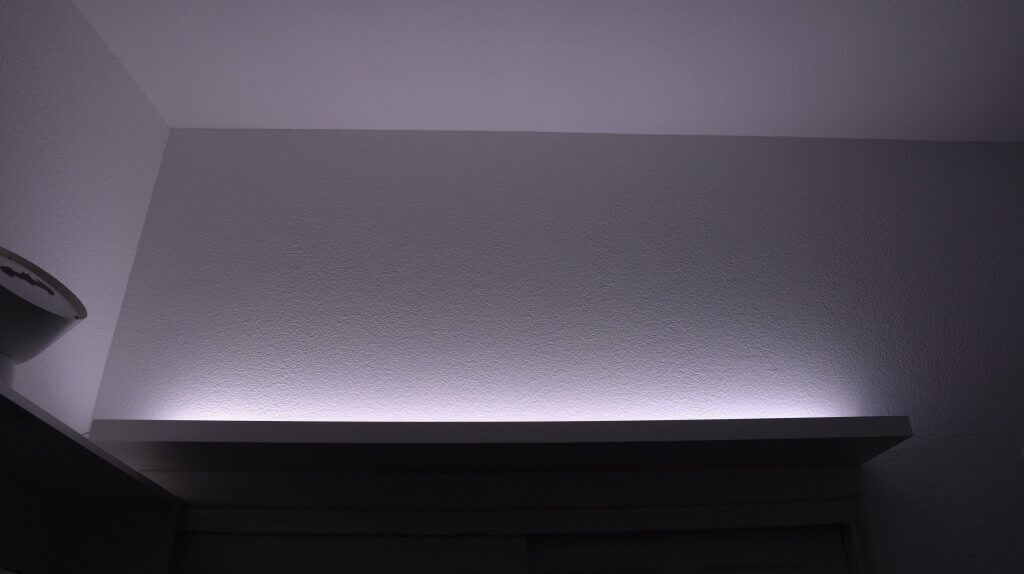
Pros:
- Really good white color since it has a separate white LED.
- Will work locally with your hub.
- Inexpensive.
Cons:
- Not very bright.
- If you don’t have a hub you can’t use them.
Nexlux
Nexlux light strips are inexpensive for the 16 feet and use WiFi.
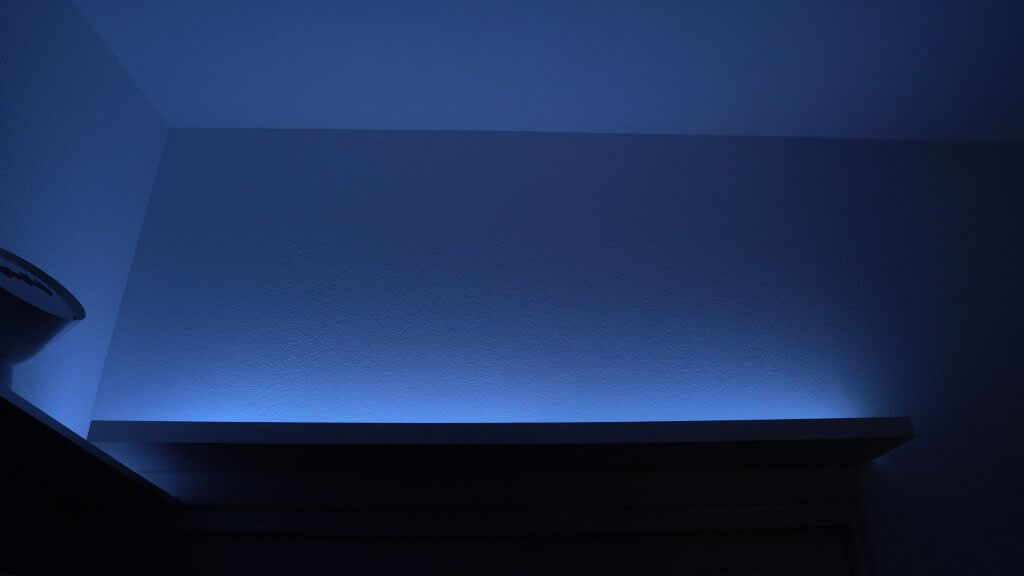
Pros:
- No hub needed and you can use the IR remote along side WiFi.
- Can cover a large area with the light strips.
Cons:
- Very dim. The brightness on these are the lowest out of any light strip on this list.
- There isn’t a dedicated white LED and the white color looks blue.
Govee Dream Color (Bluetooth)
If you want light strips that are very customizable with different effects and colors, then these are a great option.
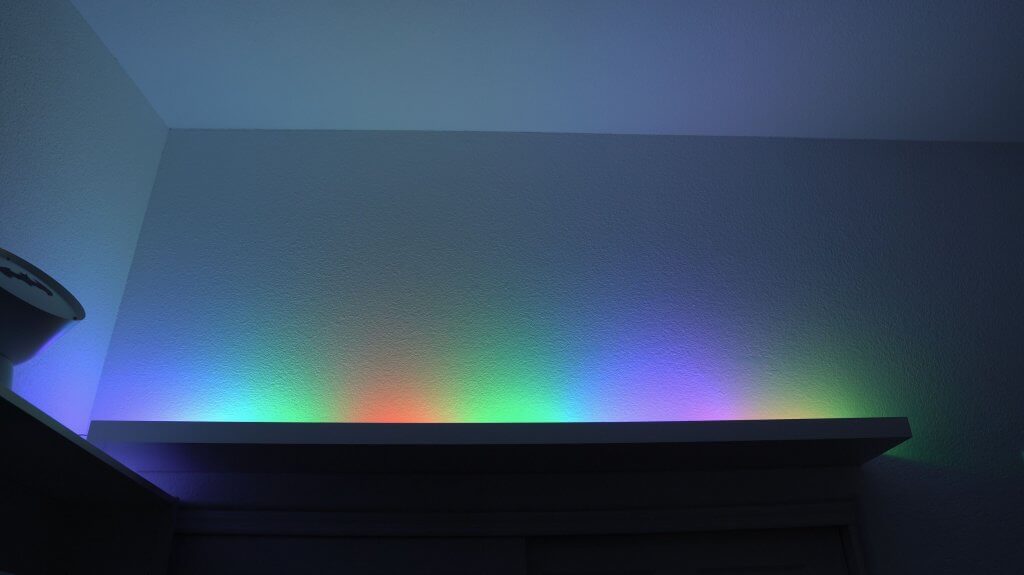
Pros:
- Addressable sections that can allow for multiple colors on the light strip at the same time.
- Very bright and the colors look amazing.
- Since these aren’t waterproof they are much lighter in weight so it’s less likely they will fall down.
Cons:
- You can’t control it with Alexa or Google Assistant.
- No dedicated white LED so you won’t get a great white accuracy. The Govee app allows warm and cool whites that look good, but not perfect.
- You can’t extend them.
Govee Dream Color (WiFi): Best Budget Overall 🏆
Very similar to the Bluetooth only version of the Govee Dream Color, but will work with Alexa and Google Assistant since they use WiFi to connect. They can also use Bluetooth.
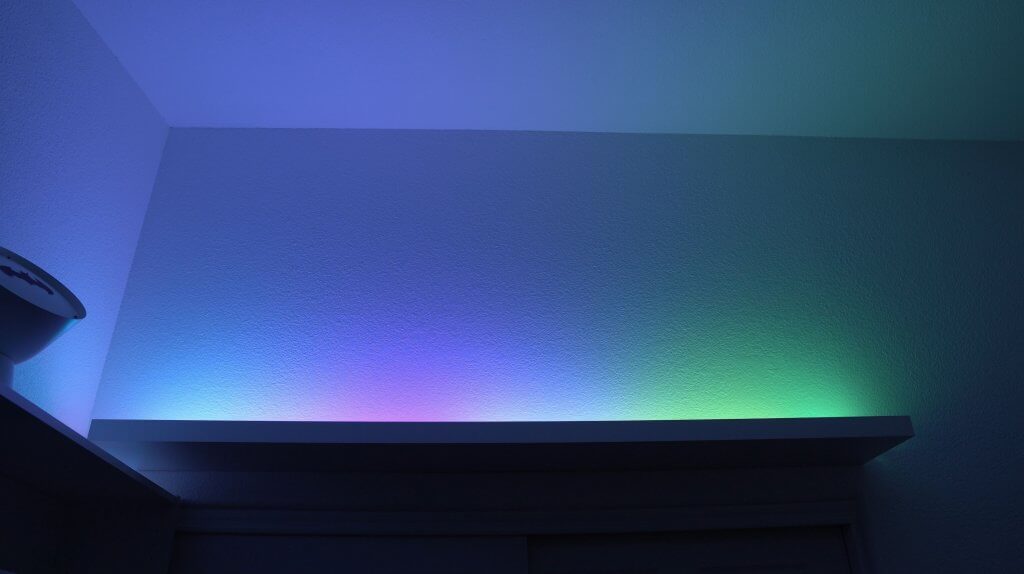
Pros:
- Very bright and the colors look really good.
- Addressable sections that can allow for multiple colors on the light strip at the same time.
- They also work with Bluetooth, so if you install them somewhere like an RV where you might not have WiFi, you can still control them with your phone.
Cons:
- No dedicated white LED so the whites aren’t perfect.
- You can’t extend them.
Govee RGBWW
The Govee RGBWW light strips have great potential for a good white color, but due to the bad implementation of the app it’s not easy to achieve the white you may want.
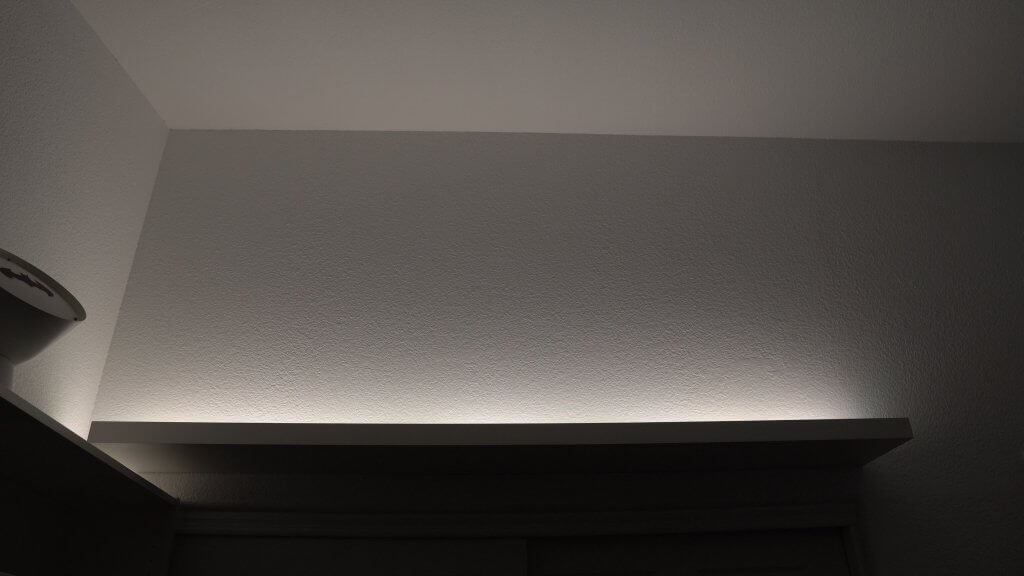
Pros:
- Two white LEDs (one warm, one cool) next to each RGB.
- Less expensive than the Hue light strip that has two white LEDs as well.
Cons:
- Trying to get a natural white color is difficult. You have to select the yellow color and then move the white temperature slider.
- The colors aren’t very bright.
- The minimum brightness when the two white LEDs are on is very bright. Deactivating the two white LEDs allows the brightness to get dimmer but this is way too clunky.
- Can’t be extended.
Sengled
Supposed to be a bright LED light strip on a budget, but it’s a bit misleading.
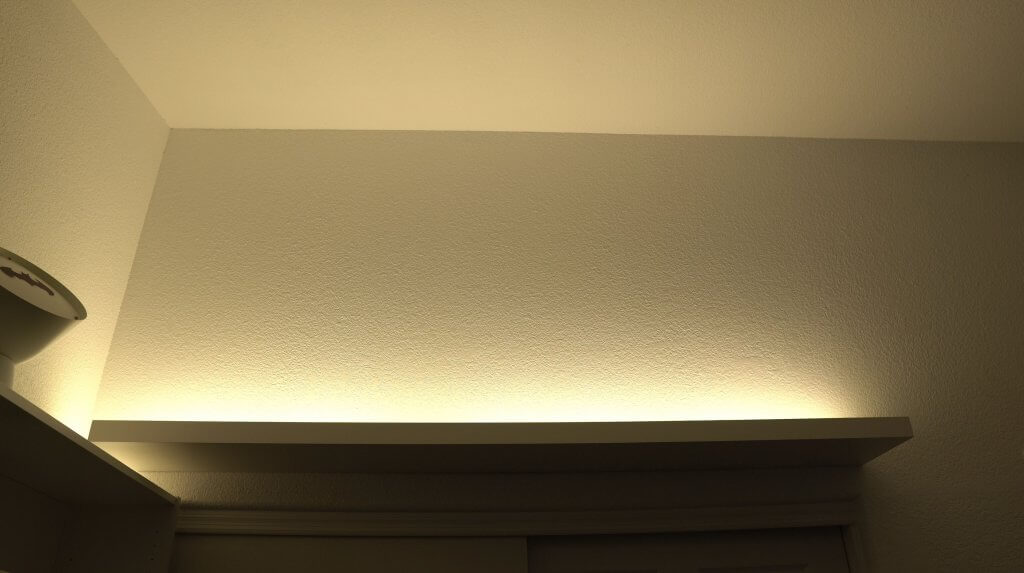
Pros:
- Can get up to 1400 lumen at 2700k white.
- Less expensive than other light strips that can get up to 1400 lumen.
- Works locally with SmartThings.
Cons:
- The warm and cool whites are disappointing. Basically anything that isn’t 2700k isn’t very bright and doesn’t look like a natural white color.
- Colors aren’t bright.
Yeelight
Yeelight is very compatible with other smart home systems and the colors are good. The white color is basically nonexistent.
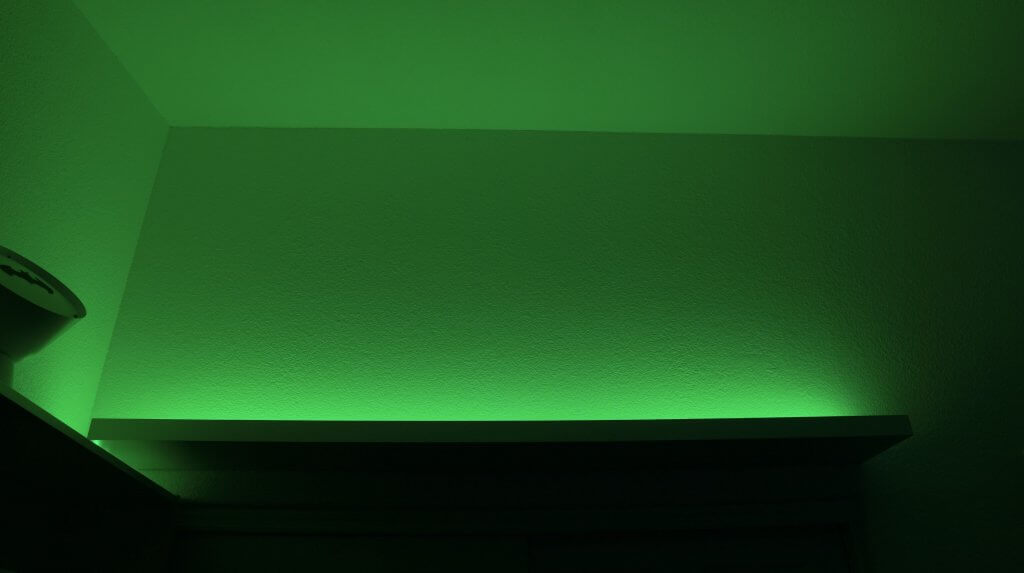
Pros:
- Colors are above average.
- Uses WiFi, so no hub needed and compatible with many smart home systems.
Cons:
- The white color looks red or orange. There isn’t a dedicated white LED.
- It isn’t very bright.
- It’s expensive and overpriced for what you get.
TP-Link: Best Overall 🏆
This is my favorite out of all the smart light strips. Although you’re paying a little more, it feels like a big step up from the other light strips that are slightly less money.
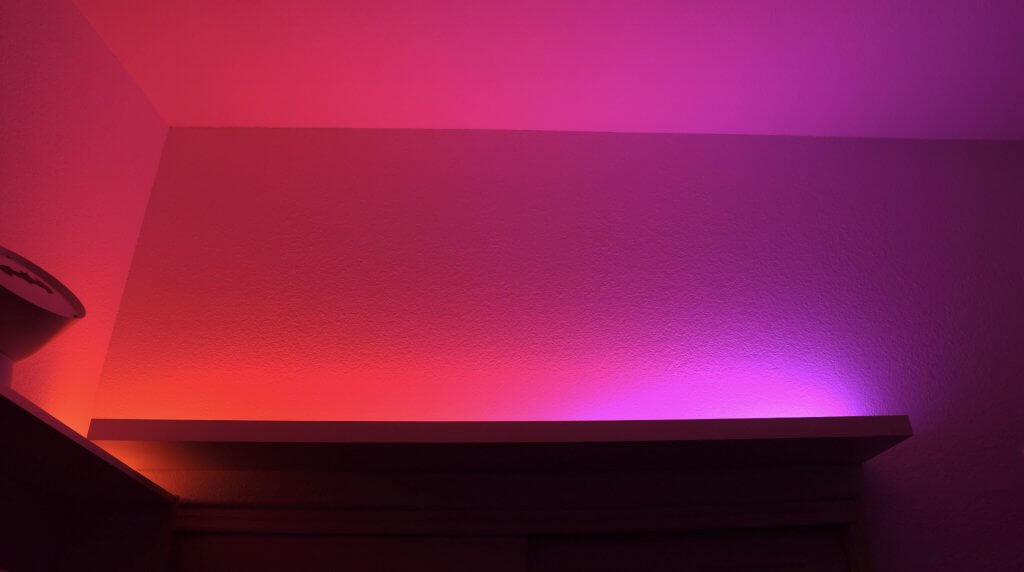
Pros:
- Very bright at 1400 lumen and the white temperatures stay very bright. The white color also looks very natural.
- Colors are bright and saturated.
- It has addressable sections similar to the Dream Color with good effects.
- Uses WiFi so no hub needed and it’s still compatible with SmartThings.
Cons:
- Still missing some customizable abilities with the addressable sections.
- A little bit expensive.
Philips Hue
The best light strip for a bright natural white color. Colors struggle.
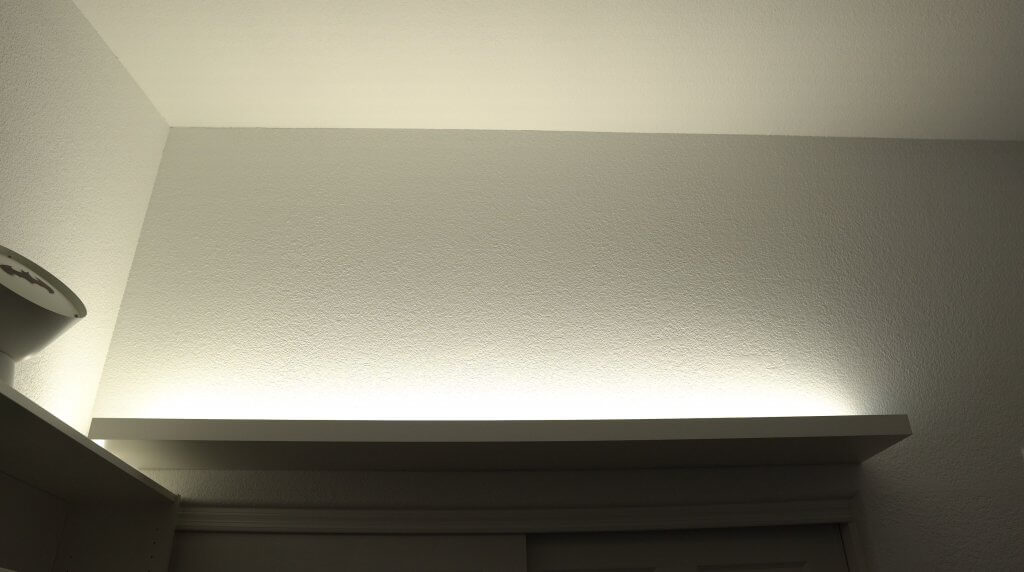
Pros:
- Has two white LEDs next to the RGB for very accurate white colors.
- 1600 lumen and the white color really lights up the room.
- Very reliable because it uses the Hue bridge.
- Can be used with Hue Sync and the large number of devices compatible with Phillips Hue.
Cons:
- The colors aren’t that bright.
- The price is a bit high.
- You need the Hue bridge to use them, which adds to the cost if you are just getting started.
LIFX Z
I’ve had these light strips in my living room for years and I really like them.
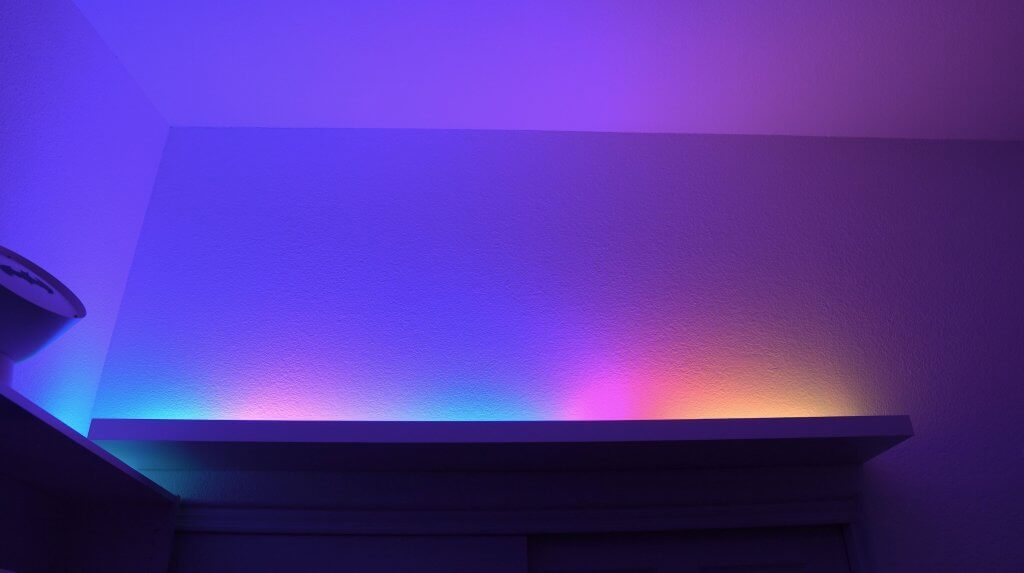
Pros:
- Very bright at 1400 lumen and the whites and colors are all very bright.
- Addressable sections, so multiple colors can be on at the same time.
- Colors are very saturated and it’s easy to pick the exact colors you want in the app.
- The LIFX app is the best smart light app available. It’s very fast and easy to use.
- Uses WiFi so you don’t need a hub and is very compatible with other smart home systems, similar to Hue.
Cons:
- It’s expensive.
Thanks for watching and reading! This is a video that I’ve been excited to make for a long time. I’ll be covering light strips more on my YouTube channel, so make sure to subscribe so you don’t miss it.
Want to see more? You can see all of my light strip videos on this playlist. These articles also might interest you:
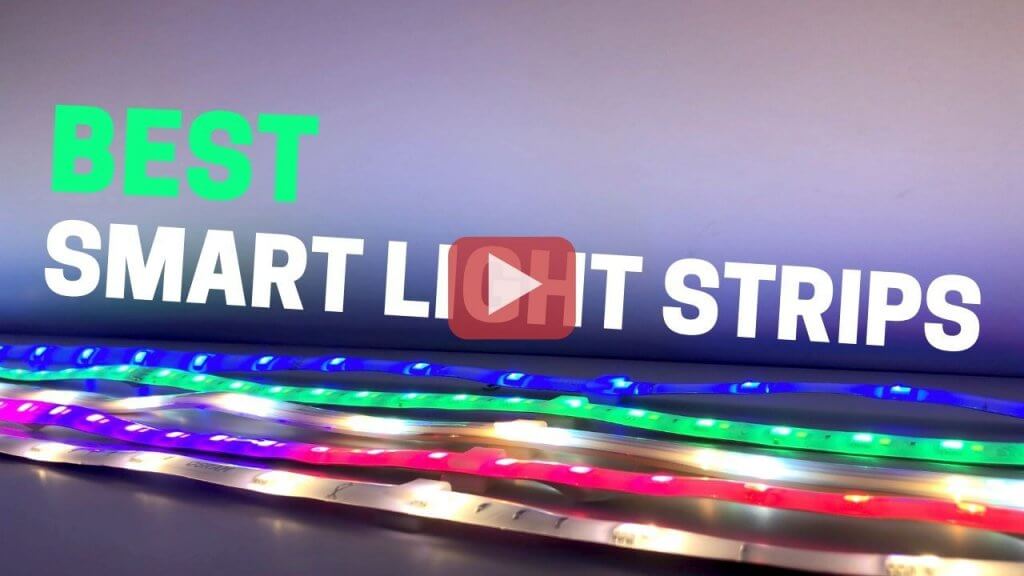

Which would be best for me for an under bathroom light strip like I think you featured in one of your videos. Want to set up with a Wyze motion sensor and IFTTT. I have a Lutron hub for lights (Wyze hub obviously as well) all my other devices connect direct to WiFi. Considering buying a hub type can’t decide what is best for future proofing. Also thinking of a color changing strip in the vaulted ceiling area above the space dividing our kitchen and living room color changing for scenes like Christmas and stuff. Just looking for refs, thanks! David
it helped me a lot, i’m in the phase of choosing my home lighting, and this post showed the right products for my home. I’m doing the shopping. thanks
Wish I had read this prior to all my Amazon purchases – I contacted Govee several times about their app not being able to set a true “warm white” without picking orange or yellow first (which means I can never get the right color with voice control).
Hoping Sylvania or TP-Link will actually give me an accurate warm white when I use voice control. Thanks!